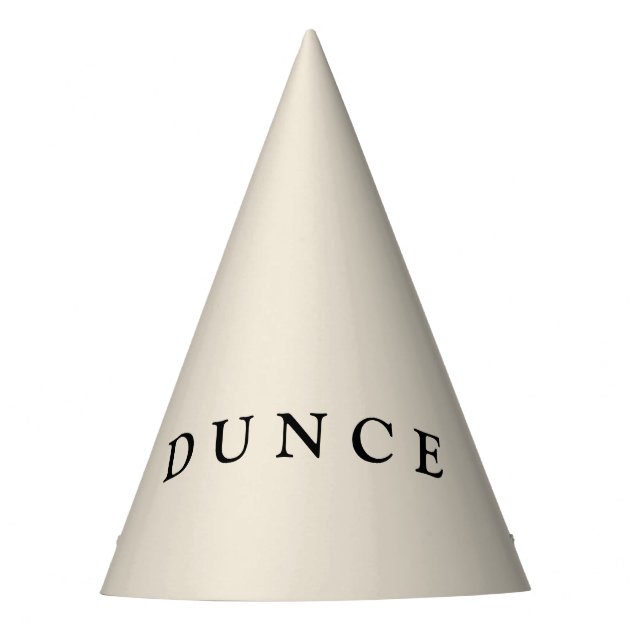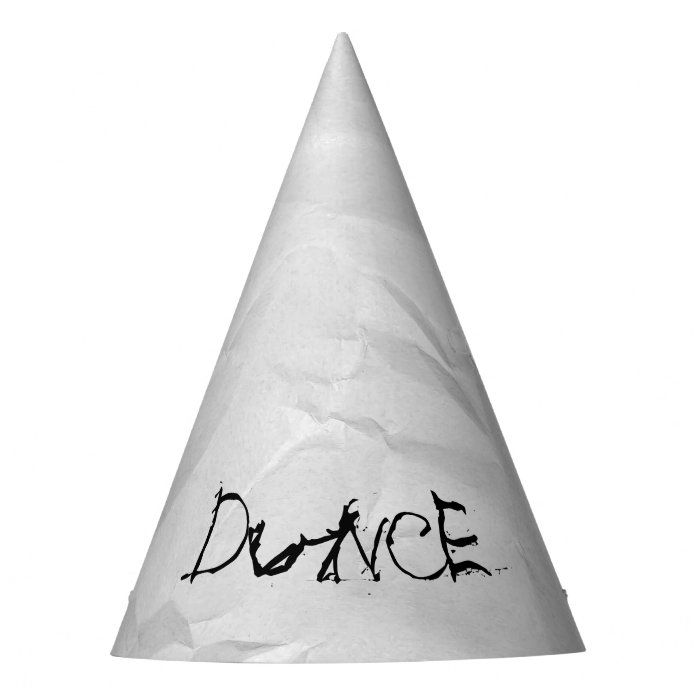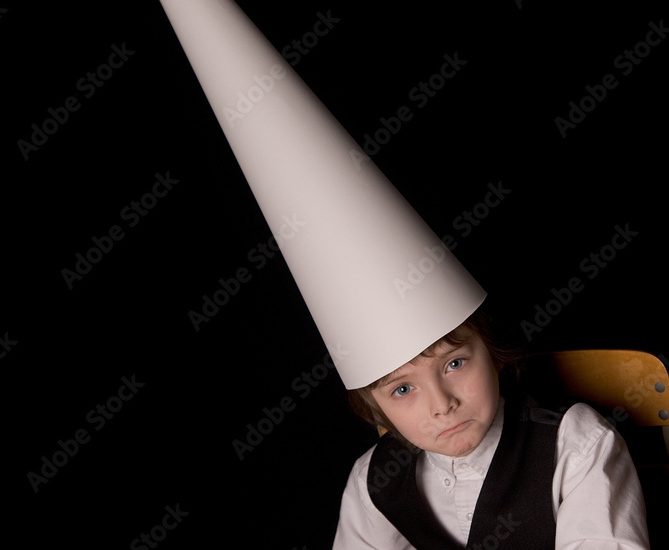Teachers and disciplinarians have long associated the dunce cap with ridicule and shame within the context of education and discipline. They often made this pointy hat from paper and marked it with the letter “D” to use historically as a tool to punish and stigmatize students considered slow learners or those who misbehaved in class.
Historical Context of the Dunce Cap
Origins in Scholastic Tradition
The dunce cap’s origins can be traced back to the medieval scholastic system, where it was theoretically intended to promote humility among students. It was named after John Duns Scotus, a respected philosopher and theologian whose followers. The Duns or Dunces, resisted new Renaissance thinking. Over time, the term “dunce” evolved to mean someone incapable of scholarship. The dunce cap, resembling Scotus’s habit of wearing a conical hat to funnel knowledge from God, ironically became a symbol of ignorance. Scholars suggest that this original meaning was lost as education methods evolved. Eventually leading to the negative connotations the dunce cap carries today.

The Use of Dunce Caps in Education
In the educational systems of the early 20th century, the dunce cap served as a method of discipline, intended to shame students who displayed learning difficulties or behavioral issues. It was based on the belief that public humiliation could motivate students to better adhere to school rules and academic expectations. However, rather than improving student behavior or performance. The dunce cap often alienated students from their peers and impeded their potential for learning by reinforcing negative self-perceptions.
The Stigmatization of Learning Differences
The use of the dunce cap also reflected the stigmatization of learning differences and the lack of understanding of conditions like dyslexia or ADHD. By effectively punishing students for their learning challenges rather than offering support. The dunce cap became an emblem of an educational system that marginalized those who did not conform to conventional academic norms. This punitive approach to education eventually fell out of favor as understanding and methods of teaching diverse learners improved.

The Social Implications of the Dunce Cap
Psychological Impact on Children
The psychological ramifications of using the dunce cap were profound. Being forced to wear the cap not only humiliated students publicly but also could lead to long-lasting emotional scars. This form of punishment could decrease self-esteem, generate anxiety, and foster an antagonistic relationship between students and educational institutions. Recognizing the potential for harm. Educational practices shifted toward more positive and constructive forms of encouragement and discipline.
The Dunce Cap in Popular Culture
Popular culture often portrays the dunce cap in a comedic light, as seen in cartoons, films, and literature. Although these representations usually aim for humor. They can perpetuate the stereotypes associated with the cap. It’s vital to understand the historical significance and real damage caused by such practices to ensure that they are not trivialized or romanticized in modern storytelling and artistic expressions.

Moving Beyond Punitive Educational Methods
In contemporary education, punitive methods like the dunce cap have been replaced with more supportive strategies. There’s an emphasis on creating inclusive learning environments that celebrate individual strengths and provide specialized support where needed. This shift is part of a broader societal movement towards valuing mental health and emotional well-being. Recognizing that each student’s potential is best nurtured through encouragement and personalized education.
The Evolution and Modern Reinterpretations of the Dunce Cap
From Stigma to Symbol of Redemption
Interestingly, there has been a modern movement to reclaim and reinterpret the dunce cap. Some artists and social activists have used the imagery of the dunce cap to challenge the status quo or symbolize redemption from past ignorance. For example, it can be an ironic statement on the failures of society’s institutions or a call to question widespread beliefs. This subversion of the dunce cap’s stigmatic history reflects society’s ongoing conversation about learning and intelligence.
Educational Reforms and Innovative Learning Methods
Furthermore, Modern educational reforms focus on the development of diverse learning methods that cater to various learning styles and abilities. The emphasis is now firmly on empowerment and the understanding that intelligence is not one-dimensional. As educators move away from a one-size-fits-all approach. Items like the dunce cap become relics of an outdated and insufficient system.

Reclaiming Historical Narrative through Critical Reflection
In reflecting on the history of the dunce cap, modern educators and historians have an opportunity to reclaim the narrative by framing it within the broader context of educational evolution. Discussing the cap’s origins and its eventual fall from use can be an enlightening way to explore changing perceptions of intelligence and learning disabilities. Lessons drawn from this historical symbol can illustrate the progress made in accepting different cognitive styles and supporting all students in reaching their full potential. It’s crucial that such reflections are infused with critical thinking. Acknowledging the harms of the past while reinforcing the commitment to a more enlightened and inclusive future.
The Dunce Cap as a Metaphor in Advocacy and Change
Therefore, Activists and thought leaders may utilize the dunce cap metaphorically to advocate for change and highlight the deficiencies in various systems. It serves as a powerful reminder of the need for continued vigilance in combating stigmatization and promoting an understanding of neurodiversity. This metaphorical use keeps the conversation alive about the ways society and its institutions can do better in recognizing the value of every individual’s unique learning process.
Dunce Cap in Artistic Expression and Philosophical Discourse
The Dunce Cap in Art and Fashion
Artists and designers have creatively incorporated the image of the dunce cap into their work as a statement on conformity and rebellion. In the world of fashion, designers can transform what was once a symbol of shame into an avant-garde accessory. Challenging conventional norms and prompting onlookers to reevaluate their preconceptions. Similarly, visual artists may reimagine the dunce cap to comment on human folly or the arbitrary nature of societal norms.
Philosophical Implications: Knowledge, Wisdom, and Folly
Moreover, The concept of the dunce cap invites philosophical contemplation on knowledge, wisdom, and folly. John Duns Scotus, after whom the cap is name, was in fact an incredibly learn man. Suggesting that society’s interpretation of wisdom is often paradoxical. The cap’s history becomes a jumping-off point for discussions on the nature of learning, the construction of intellectual hierarchies, and the relationship between education and enlightenment. As philosophy uncovers deeper meanings behind symbols like the dunce cap. It contributes to a more nuanced understanding of our educational values and goals.

Artistic and Philosophical Reimagining as a Social Commentary
Ultimately, the dunce cap endures as a potent symbol for artistic and philosophical reimagining. It has the power to provoke discourse on education, social conformity, and individuality. When artists or thinkers employ the dunce cap in their work, they are initiating a dialogue about the mistakes of the past and our hopes for the future. Using it as a means to critique existing power structures and promote societal reflection. The dunce cap’s transformation from a humiliating disciplinary tool to an object of critical examination encapsulates the potential for redemption and renewal, demonstrating the enduring power of symbols in societal change.
Finally, The dunce cap’s journey from medieval classrooms to present-day discussions around educational practices and inclusivity offers a rich landscape for exploration. Once a tool for shaming students, it now operates as a historical artifact, a metaphor, and a subject of reinterpretation.





